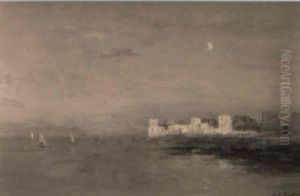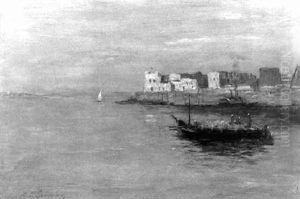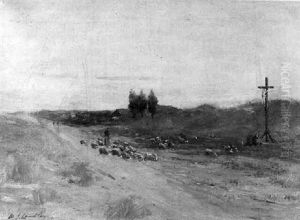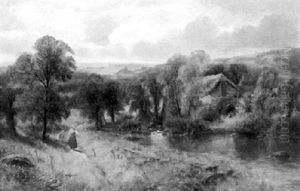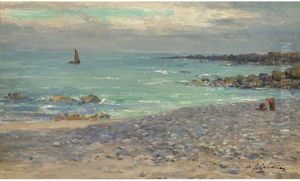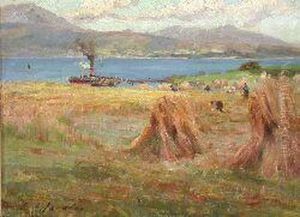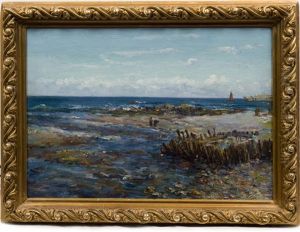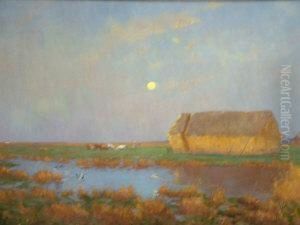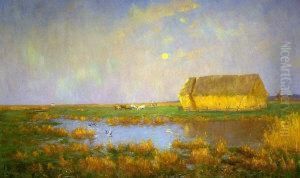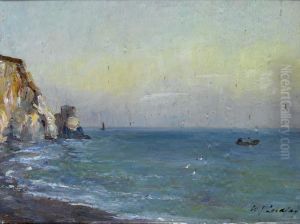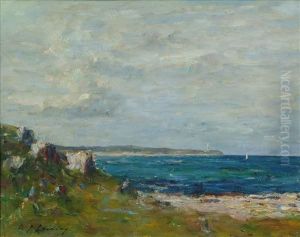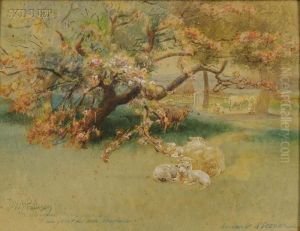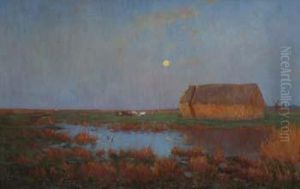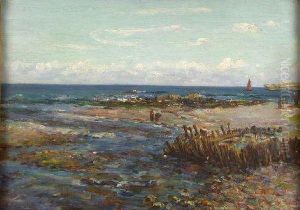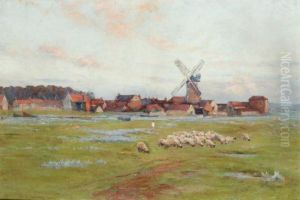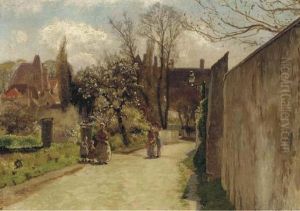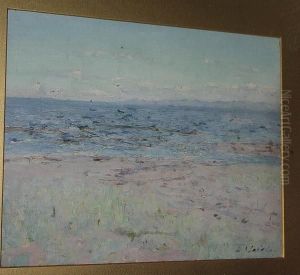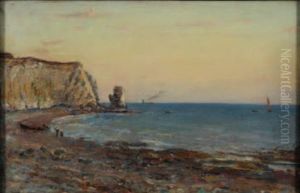William James Laidlay Paintings
William James Laidlay was a Scottish painter, born in 1852 in Musselburgh, East Lothian, Scotland. He was known for his landscape and portrait paintings. Laidlay's artistic talents were evident from an early age, and he pursued his passion for art through formal education. He studied at the Trustees’ Academy in Edinburgh which was one of the leading art schools of the time, where he developed his skills and technique under influential instructors.
Laidlay's work was greatly influenced by the French Barbizon school, which emphasized painting landscapes directly from nature. This influence is visible in his landscape paintings which often showcase the beauty of the Scottish countryside. He often worked en plein air, a practice of painting outdoors that allows for capturing the transient effects of light and atmosphere, which became a hallmark of his style.
Throughout his career, Laidlay exhibited his work at various prestigious venues. He was a regular exhibitor at the Royal Scottish Academy and also showed his works at the Royal Academy in London. His paintings gained him a considerable reputation, and he amassed a group of patrons who appreciated his work.
In addition to landscapes, Laidlay was also a talented portrait artist. He had the ability to capture not just the physical likeness of his subjects but also their character and mood. This talent made him a sought-after portraitist during his lifetime.
William James Laidlay lived during a period of significant change in the art world, with movements such as Impressionism beginning to take hold. While he was influenced by contemporary trends, he remained true to his own style, which combined traditional techniques with the desire to represent the natural world faithfully.
Laidlay's life was dedicated to his art, and he continued to paint until his death in 1917. His legacy is carried on through his artworks, which continue to be appreciated for their quiet beauty and technical skill. His contribution to Scottish art is also recognized in the context of the broader European movements of the 19th century.


